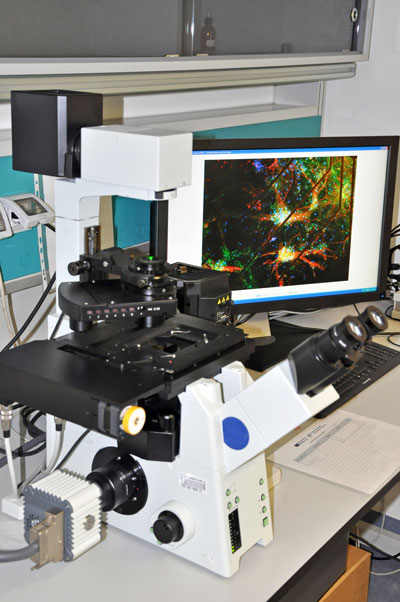| Sep 05, 2011 |
Scientists develop a technique for automated three-dimensional nanoparticle tracking using a conventional microscope
|
|
(Nanowerk News) Nanoparticles are becoming ubiquitous in many areas of biology and chemistry where they are finding a myriad of uses, including in arrays as chemosensing and biosensing platforms, as building blocks for more complicated structures, and individually as alternatives to fluorescent molecules and quantum dots as labels in bioanalysis.
|
|
In colloidal systems, interactions of particles of the order of 100nm to 1mm control the behavioral characteristics, for instance the interaction of fat particles and proteins determine whether milk coagulates into cheese or yoghurt. In all of these applications, the capability to locate, track and identify the size of nanoparticles is important but it is not possible to image such particles in an optical microscope because their dimensions are typically below the resolution limit.
|
 |
| Automated microscope with view of stained neuronal network. (Copyright European Union 2010)
|
|
In this study ("Three-dimensional automated nanoparticle tracking using Mie scattering in an optical microscope"), co-authored by scientists of the Joint Research Centre, Institute for Health and Consumer Protection (JRC-IHCP), the potential to track automatically in three dimensions particles of the order of 10–50nm is demonstrated by motorizing the objective of a conventional inverted optical microscope in such a way that the objective can be repeatedly translated over a distance along the light path, above and below the point of optimum focus. With the adjustable field aperture closed to its minimum to maximise contrast, a series of images capturing diffraction patterns of scattered light can be acquired and processed to locate the precise position of the nanoparticle.
|
|
The technique has the advantage of being relatively easy to apply in a conventional inverted optical microscope and can be applied repeatedly to allow tracking of nanoparticles. A temporal resolution of 200 ms was achieved and was limited by the framing rate (500 frames s-1) of the camera. Therefore, the range of potential application in nanobiotechnology, nanoengineering, food processing and pharmaceuticals is extensive.
|

